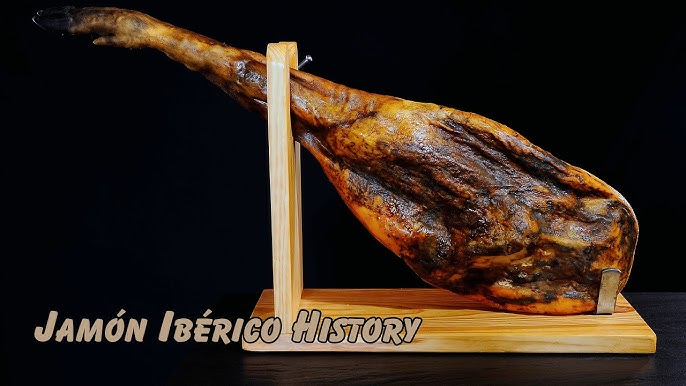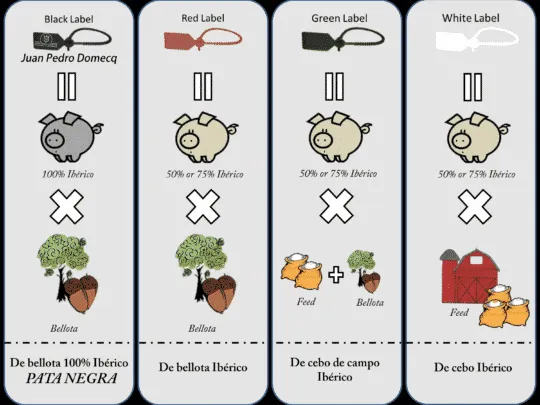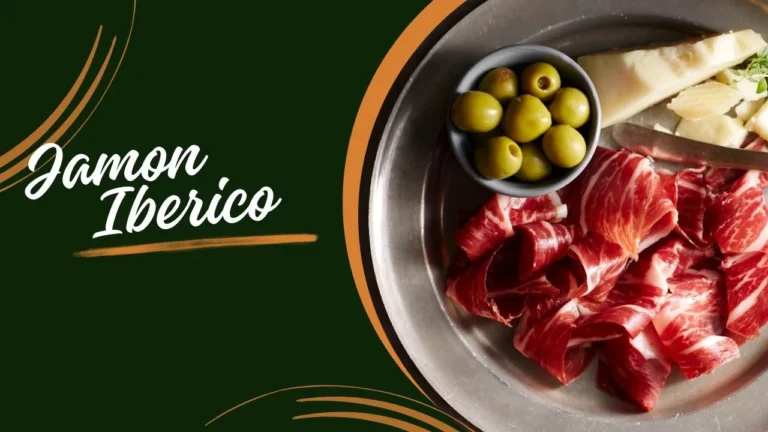In Spain, food is not just nourishment — it’s a deep expression of culture, history, and pride.
Among its many culinary masterpieces, Jamón Ibérico stands as a true national symbol. This cured ham, crafted from the black Iberian pig, is a product of nature, time, and passion — each slice revealing the artistry of generations of Spanish producers.
From the oak forests of Andalusia to the gourmet tables of Madrid and beyond, Jamón Ibérico represents the very soul of Spanish gastronomy. Let’s explore what makes it one of the most exquisite foods in the world.
Table of Contents
Toggle🐖 The Origins of Jamón Ibérico

The history of Jamón Ibérico stretches back thousands of years. Ancient Iberian tribes already practiced the art of curing pork with salt — a method perfected over centuries.
Today, Jamón Ibérico is still produced following traditional techniques passed down through generations.
The ham comes from the Iberian pig (Cerdo Ibérico), native to Spain and Portugal, known for its dark color and ability to store fat within its muscles — creating that famous marbling that melts on the tongue.
🌳 The Secret of the Dehesa
The secret behind the unique flavor of Jamón Ibérico lies in the Dehesa, the vast oak forests of southern and western Spain.
Here, pigs roam freely, feeding on acorns (bellotas), herbs, and natural pasture. This diet gives the meat its distinctive nutty flavor and silky texture.
Regions like Extremadura, Andalusia, and Salamanca are renowned for their Dehesa landscapes, where the balance between nature and tradition remains unchanged for centuries.
🍽️ The Art of Curing
Producing Jamón Ibérico is a slow, meticulous process that can take from 2 to 5 years.
Salting: The fresh ham is covered with sea salt to preserve it.
Drying: It’s hung in cool, dry mountain air for months.
Aging: Finally, the ham matures in cellars called bodegas, where temperature and humidity are carefully controlled.
This natural curing process develops a rich aroma and depth of flavor — sweet, savory, and slightly nutty — that no machine or additive can replicate.
🧡 Types and Quality Grades

Not all Jamón Ibérico is the same. Spain classifies it into categories based on the pig’s diet and breed:
Jamón Ibérico de Bellota – The finest type. Free-range pigs fed exclusively on acorns.
Jamón Ibérico de Cebo de Campo – Pigs fed on acorns and natural pasture.
Jamón Ibérico de Cebo – Pigs raised on grain feed, but still Iberian breed.
Each leg of ham bears a colored label regulated by Spanish law — black for 100% Bellota, red for 75%, green for Cebo de Campo, and white for standard Cebo.
🏆 Health Benefits and Cultural Meaning
Despite its richness, Jamón Ibérico is surprisingly healthy when eaten in moderation. It’s high in oleic acid, the same heart-friendly fat found in olive oil, and packed with protein, iron, and vitamin B.
But beyond nutrition, Jamón Ibérico is a cultural ritual — sliced thinly by expert carvers, served on wooden boards, and shared with friends alongside a glass of Rioja wine.
It represents celebration, craftsmanship, and the art of savoring life.
🕰️ Where to Taste It in Spain
You can enjoy authentic Jamón Ibérico almost anywhere in Spain, but for the best experience:
Jabugo (Huelva) – Home to world-famous Jamón de Jabugo.
Guijuelo (Salamanca) – Renowned for its smooth, aromatic flavor.
Extremadura – Rustic and authentic, surrounded by ancient oak fields.
Madrid & Barcelona – Tapas bars and gourmet shops offering curated tasting experiences.
Many shops even allow visitors to watch master carvers (cortadores) in action — a true performance of Spanish tradition.
💬 Conclusion
Jamón Ibérico is more than a delicacy — it’s a living piece of Spain’s history.
From the oak forests where the pigs graze to the centuries-old curing cellars, each stage reflects Spain’s respect for nature, patience, and flavor.
Whether you enjoy it in a local tapas bar or bring it home as a gift, every slice tells a story — the story of Spain’s passion for perfection.
A single taste of Jamón Ibérico is enough to understand why it’s called “the jewel of Spanish cuisine.”



[…] Jamón Ibérico: Spain’s Culinary Treasure Churros con Chocolate: Spain’s Sweet Delight […]